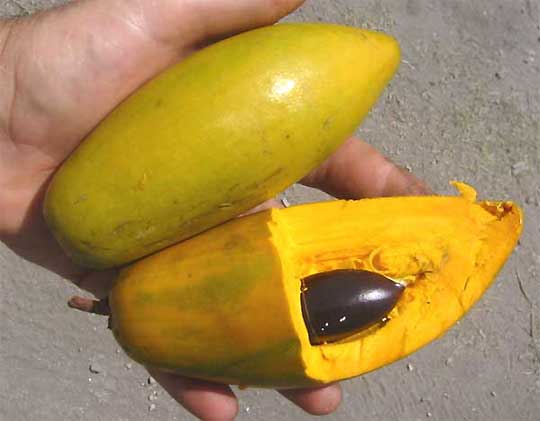The Abiu (Pouteria Caimito)

The Abiu is a kind of sapodilla fruit fresh from Australia. It felt strange and unusual. The form also does not resemble the sapodilla, although Abiu tree has characteristics similar to the sapodilla family, which is woody and can reach 15cm in height. The fruit shape is an oval to rounded, with a length of 6-12 cm and weight 150-500 g/fruit. Because widely cultivated in Australia, plants that are included in PouteriaCaimito species and Sapotaceae family are better known as the sapodilla Australia. In fact, the original home is the area around the Amazon lowlands of Peru, and Brazil.
Abiu Fruit adaptive in tropical and subtropical climates it thrives ranging from lowland to upland. The main merits than other Sapotaceae family members are quick to bear fruit. At the age of 2 years, the origin of seed plants start flowering. Two months later, the flowers become fruit is green and gradually becomes bright yellow when fully ripe / mature.
Abiu fruit flesh is white translucent with characteristic flavor sweet sticky and fresh. Someone described it as a young coconut flavor, but there are also those who identify with a blend of milk and caramel. Because the meat is tender and slightly juicy, edible abiu cleaved by transverse or longitudinal; or also with a scooped. In each fruit there are seeds abiu 1-5.
Besides can be eaten directly, abiu fruit can be processed into various food specials, like Abiu Carambola Chicken Breast (fried chicken breast cooked with abiu and starfruit juice), Abiu Tart, Sweet & Sour Abiu & Beefburger, and so on. Because many contain vitamins A, B3, and C, as well as a rich source of calories and fiber, Abiu fruits also have many benefits for our health. In Brazil, abiu fruit pulp is used to relieve coughs, bronchitis and other respiratory complaints or lungs. While the tree sap abiu efficacious as de-worming, laxatives, and heal wounds swollen.


















